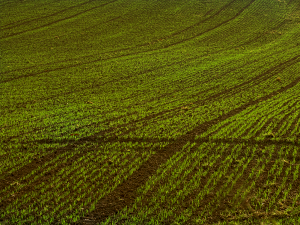 Northwest Region Crop Report Prepared by: Manitoba Agriculture
Northwest Region Crop Report Prepared by: Manitoba Agriculture
June 23, 2020 |
Northwest Region
Conditions in the Northwest region this week were variable with temperatures nearing 30°C midweek and falling to single digit daytime highs later in the week.
Conditions improved by Sunday with seasonal temperatures returning. There was rainfall in parts of the region, however, dry areas received the least amount of precipitation and previously wet areas at The Pas received upwards of 47mm. Soil conditions are 80% adequate, 15% short and 5% very short of moisture. Crops damaged by strong winds last week are showing some signs of recovery.
While spray conditions were somewhat better due to less extreme winds, fluctuating temperatures were a challenge. Spring cereals in the region are in the seedling/tillering growth stage, starting into stem elongation in the southern part of the region. Spring cereals are generally in good to excellent condition although weed control has been a challenge. Winter wheat and fall rye are heading/flowering; winter wheat is in fair to good condition while fall rye is in excellent condition. Canola growth stages are variable due to reseeding with 65% in the seedling stage and 25% in the rosette stage. Pressure from flea beetles continued this week on canola seedlings.
The soybean crop is in the vegetative stage and is in good to fair condition; soybean condition is better in the southern part of the region. Field peas are in the vegetative stage. Condition of the field pea crop is good to fair in the Swan River area and excellent around Roblin. Flax condition is in good condition. Canola, field peas and soybeans are starting to recover from extreme wind events earlier this spring. Impacts from flea beetles and cutworms remains a concern and some control measures have occurred. Diamondback moth monitoring continues with traps throughout the region; the highest regional numbers have been at The Pas. Producers are encouraged to begin scouting for diamondback larvae when monitoring canola fields. Strong winds and temperatures too high or too low have made pesticide applications challenging.
Forage growth in hay fields and pastures is suffering in most of the region due to dry conditions, with the driest being around Pine River, Ethelbert, Roblin and Swan River. The Pas area has better moisture conditions but forage growth remains slow from inconsistently favourable weather conditions and some pastures are very wet due to recent rainfall events. Around Sifton and Gilbert Plains, grasshoppers are a concern. Haying has started for dairy producers and those looking for higher quality in the Dauphin and Ste. Rose areas. Hay yield potential remains far below normal with more of the severely affected areas not warranting cutting if dry conditions remain. Slow pasture growth will mean a shortened grazing season. Without significant rainfall soon, producers will be tasked with making difficult decisions over the next couple of weeks on how to manage and provide both summer and winter feed for their herd, which will be further compounded by the fact that there is little to no carryover in the feed yards. Livestock water supplies throughout the region remain adequate.
